FAQ
What is a solar panel and how does it work?
A solar panel uses photovoltaic (PV) cells to convert sunlight into direct current (DC) electricity. This DC power is then converted into alternating current (AC) by an inverter, which is the type of electricity used in homes.
What are the different types of solar panels?
Monocrystalline: High efficiency and sleek design.
Polycrystalline: More cost-effective with slightly lower efficiency.
Thin-film: Lightweight and flexible, but with lower lifespan and performance.
What is the lifespan of a solar panel?
Most high-quality solar panels come with a 25 to 30-year warranty and can still operate at 80–90% efficiency even beyond that period.
How much maintenance do solar panels require?
They require very little maintenance. Periodic cleaning and an annual inspection are usually enough to ensure optimal system performance.
Do solar panels work in winter or on cloudy days?
Yes, although efficiency decreases in cloudy or snowy conditions, solar panels still generate electricity. In fact, they often perform better in cold weather.
How many solar panels do I need for my home?
This depends on your electricity consumption and the output capacity of each panel. Typically, a medium-sized home requires between 15 to 25 solar panels.
Does installing solar panels damage the roof?
No, when installed by a professional, solar panels do not damage the roof. In fact, they can even help protect it from weather-related wear and tear.
Does installing solar panels save money?
Yes, by reducing reliance on grid electricity and benefiting from incentive programs, the system can pay for itself within a few years.
What is the role of the inverter in a solar system?
The inverter converts the direct current (DC) produced by the panels into alternating current (AC), which is used by household appliances.
What types of inverters are there?
String inverter is the most common and cost-effective option. Microinverters are installed on each individual panel, making them ideal for rooftops with shading or different tilt angles. Hybrid inverters offer the flexibility to connect both to batteries and the utility grid.
Which type of inverter is best for me?
If your roof is shaded, microinverters are recommended. For simpler systems, a string inverter is more cost-effective. If you plan to use battery storage, a hybrid inverter is the right choice.
What is the lifespan of an inverter?
They typically last between 10 to 15 years. Some models can last up to 20 years and may need to be replaced once during the lifespan of the solar panels.
What does inverter efficiency mean?
It refers to the percentage of energy that is converted into alternating current (AC) without losses. Most modern inverters have an efficiency rate between 95% and 98%.
Does the inverter work during a power outage?
Only hybrid or off-grid inverters combined with battery storage can supply power during a blackout. Standard grid-tied inverters automatically shut down for safety reasons.
How can I monitor the performance of my inverter?
Most inverters come with a digital display or a mobile app that shows information such as energy production, consumption, and alerts.
Can the solar panel capacity exceed the inverter’s rated power?
Yes, within the allowed standards, it's possible to slightly oversize the panel capacity to achieve better performance in low-light conditions.
What is the role of a battery in a solar system?
The battery stores excess energy produced by the solar panels, allowing it to be used at night, during power outages, or during peak demand hours.
What are the most common types of solar batteries?
Lithium-ion (LiFePO₄): Efficient, long-lasting, and low maintenance.
Lead-acid: More affordable but shorter lifespan and requires more frequent maintenance.
How much storage capacity do I need?
For daily use, 10 to 15 kilowatt-hours is typically sufficient. For partial backup, 5 to 10 kilowatt-hours may also be adequate.
What is the lifespan of a solar battery?
Lithium batteries typically last 10 to 15 years. Their lifespan is measured by the number of charge and discharge cycles.
Can a battery be used in an off-grid system?
Yes, batteries are essential for off-grid systems. They provide the necessary electricity when sunlight is unavailable.
Do batteries require maintenance?
Lithium batteries are virtually maintenance-free. Lead-acid batteries, however, require periodic checks of fluid levels.
What happens when the battery is full?
If the battery is fully charged, the excess electricity is either sent back to the grid (in grid-tied systems) or remains unused (in off-grid systems).
What accessories are needed for a solar system?
Mounting structure and support frame
Cables and connectors
Monitoring system
Charge controller
Safety equipment such as fuses and surge protectors
What is a charge controller?
The charge controller regulates the flow of electricity from the panels to the battery, preventing overcharging and sudden discharge.
What is the purpose of devices like bidirectional meters or net metering?
These devices measure the amount of electricity sent to and received from the grid and are used to settle your electricity bill accordingly.
Why are cables and connectors important?
Proper cables help reduce energy loss and enhance safety. Undersized or poor-quality cables can overheat and potentially damage the system.
How does a monitoring system work?
This system displays real-time information such as power production, consumption, battery charge level, and overall system status through a mobile app or website.
What is a solar optimizer?
Optimizers are installed on each panel to maximize electricity production and reduce the impact of shading or dust.
Can a solar system be expanded in the future?
Yes, with proper planning, it is possible to add panels, batteries, or other components in the future. It’s important to consider the inverter’s capacity when doing so.
Are all accessories standardized?
Some components, like MC4 connectors, are standardized, but others may be compatible only with specific brands. Always check equipment compatibility before purchasing.
What exactly does solar panel efficiency mean?
Efficiency indicates the percentage of sunlight that is converted into usable electricity. For example, a 20% efficiency means that 20% of the sun’s energy is transformed into electrical power. Soliran panels are offered with high efficiency ratings ranging from 18% to 22%.
What is the maximum output power of a solar panel, and how is it calculated?
Output power is measured in watts peak (Wp). For example, a 450-watt panel produces this amount of power under standard test conditions. In real-world scenarios, actual output depends on factors such as weather conditions and the installation angle.
Why is the panel installation angle important?
The installation angle helps maximize sunlight exposure. In Iran, it is generally recommended to set the angle equal to the site's latitude — typically between 30 to 35 degrees on average.
What is the temperature coefficient of a solar panel?
ChatGPT said: The temperature coefficient indicates how much a panel’s efficiency decreases as temperature rises. Panels with lower temperature coefficients perform better in hot climates like Iran. Soliran uses advanced technology panels designed to maintain optimal performance even in high temperatures.
What does MPPT mean in an inverter or charge controller?
Maximum Power Point Tracking (MPPT) is a technology that adjusts voltage and current to ensure the panel operates at its maximum power point. This feature can increase system efficiency by up to 30% compared to simpler models.
Why is Total Harmonic Distortion (THD) important in inverter output?
THD (Total Harmonic Distortion) measures the amount of distortion in the generated AC voltage. The lower the THD, the higher the quality of the output power. Soliran offers inverters with THD below 3%, making them perfectly suitable for sensitive electronic devices.
Is it necessary to use a breaker and surge protector?
Yes, to enhance system safety, using DC/AC circuit breakers and surge protection devices (SPDs) is essential. These components protect the system against voltage fluctuations and lightning strikes.
How can we protect the system from back-feed current?
The use of bypass diodes in panels and DC fuses as standard components in Soliran systems prevents back-feed current and protects the equipment from potential damage.
Does Soliran handle the installation of solar systems?
Yes, Soliran provides professional installation services carried out by a skilled and experienced team, backed by a quality guarantee.
How long does it take to install a solar system?
Depending on the system size, installation typically takes between 1 to 3 business days.
Is any special permit required for installation?
For grid-tied systems, a permit from the local utility company is usually required. Soliraq provides guidance and handles the follow-up process to ensure everything is completed smoothly.
Do customers receive training on how to use the system?
Yes, after installation, the Soliran team provides complete training on how to use the equipment and offers maintenance tips.
What does Soliran's after-sales service include?
It includes expert repairs, spare parts supply, technical support, and ongoing consultation for up to 10 years after purchase.
How can I request after-sales service?
Customers can submit their service requests via phone call, email, or through Soliraq’s official website.
Does the product warranty cover installation and commissioning services?
The 36-month product warranty covers defect repairs and replacement of faulty components, with proper installation guaranteed by the Soliran team.
What should I do if there’s a problem with the system?
In the first step, contact Soliran's after-sales service team so that our experts can assist you with troubleshooting and resolving the issue.
Still have questions?
Get in touch with our team at +964 771 022 2240

